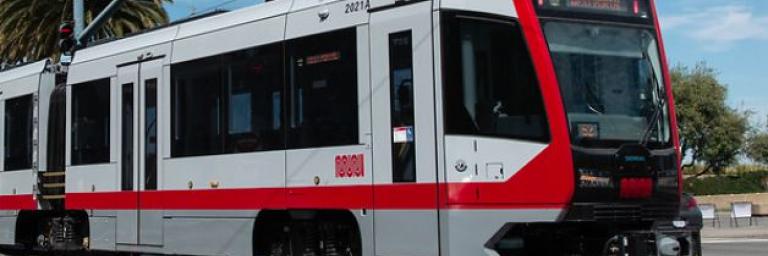This study has been on hold since the pandemic due to the need to prioritize staffing resources for other agency efforts. Sign up to receive updates to be notified when work resumes on this study.
The Central Subway Extension is an opportunity for the San Francisco Municipal Transportation Agency (SFMTA) to evaluate a potential northward extension of the Central Subway beyond its current Chinatown Station terminal (opened winter 2023) toward North Beach and Fisherman’s Wharf. The Central Subway Extension was identified as a recommendation in the ConnectSF Transit Investment Strategy, which was published in December 2021. The Central Subway Extension Alternatives Study is anticipated to begin in 2024 and will explore the feasibility of additional stations and routing options.
By the year 2049, the City is projected to grow to nearly 1,000,000 residents. Therefore, the need for efficient public transit is great today and will continue to grow in the future. The Central Subway Extension is an opportunity for the SFMTA to evaluate potential future investments in the City’s public transit system as ridership grows. Possible destinations include North Beach, Fisherman’s Wharf, the Marina, Cow Hollow, and Presidio.
- Planning
Reasons for Studying the Central Subway Extension
In 2022, the Central Subway (Third Street Light Rail Phase 2) is expected to open. In addition to the underground Chinatown - Rose Pak Station, new stations will also be located at 4th and Brannan (surface), Yerba Buena/Moscone (underground), and Union Square/Market (underground).
Although Chinatown - Rose Pak Station will be the northern terminal of the Central Subway, subway tunnels currently exist north of the station terminating in North Beach at Columbus Avenue and Union Street.
During construction of the Central Subway, these additional tunnels were established so that the tunnel boring machines could be removed from the ground in an area where off-street space was available. Passenger service will not operate in the tunnels north of Chinatown Station, but the tunnels are designed to further extend service in the future. As a result, the SFMTA is studying the potential to add a station in the existing tunnels in North Beach, and possibly extend the subway to the north and/or west.
Prior Work
T Third (Phase 3) Concept Study
The T Third (Phase 3) Concept Study, published in January 2015, was a joint effort between the San Francisco County Transportation Authority (SFCTA), the SFMTA, and the San Francisco Planning Department, with SFMTA as the lead agency. The goal was to determine whether the idea of a subway extension is feasible.
The Concept Study identified preliminary technical strengths and tradeoffs of sample subway extension routes and configurations (e.g. subway vs. surface vs. combination) along Powell Street, Beach Street, and Columbus Avenue with input from stakeholders, governing bodies, and the public. The study evaluated the sample alternatives based on the following criteria:
- Passenger Experience
- Operational Efficiency
- System Performance
- Local Operations Considerations
- Infrastructure Resiliency
- Construction Effects
- Capital Construction Cost & Risk
Ultimately, the study showed that a subway extension would be technically feasible but did not identify a preference.
Current Phase: Alternatives Study:

The study’s objectives include:
- Building upon the 2015 Concept Study, the Alternatives Study.
- Combining community input through stakeholder interviews, workshops and other interactive activities with concept-level engineering to identify viable project alternatives (i.e. potential routes and station locations).
- Evaluating and screening the alternatives based on community feedback and engineering feasibility, resulting in two to three of the most promising alternatives.
- Depending on community support for the project and the availability of funding, these alternatives would be carried forward for environmental review in a future phase of the project.
The study has a four step process:
Step 1
Survey community organizations to determine transportation
goals, the desirability of a subway along with desired route and station locations (complete – results here).
- The SFMTA will use this input to develop a preliminary set of alternatives that meet the identified goals.
Step 2
Present the preliminary set of alternatives at community meetings, to confirm that the alternatives address the goals identified in Step 1 (TBD).
- The SFMTA will take the refined alternatives and perform concept-level analysis (developing preliminary plan drawings, cost estimates, and cost/benefit analyses), and prepare a draft Alternatives Study report summarizing the results.
Step 3
Share the draft Alternatives Study report results at community meetings to seek input on preferred alternatives and gather feedback (TBD).
- The SFMTA will document the feedback and prepare a final version of the Alternatives Study report.
The preferred alternatives will undergo environmental review during a future phase of the project, contingent upon community support for the project and funding availability.
Step 4
- Circulate the final version of the study (TBD).
